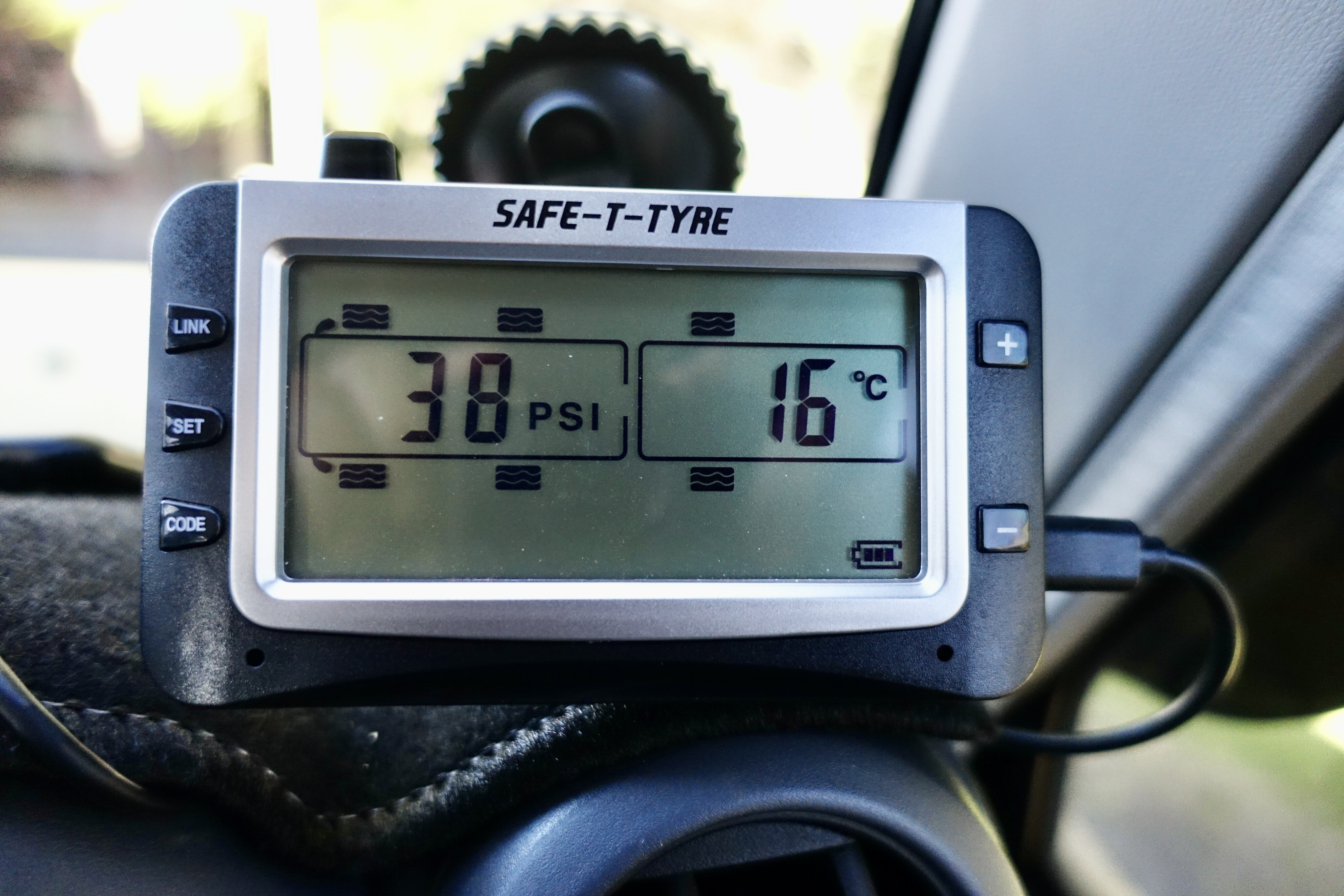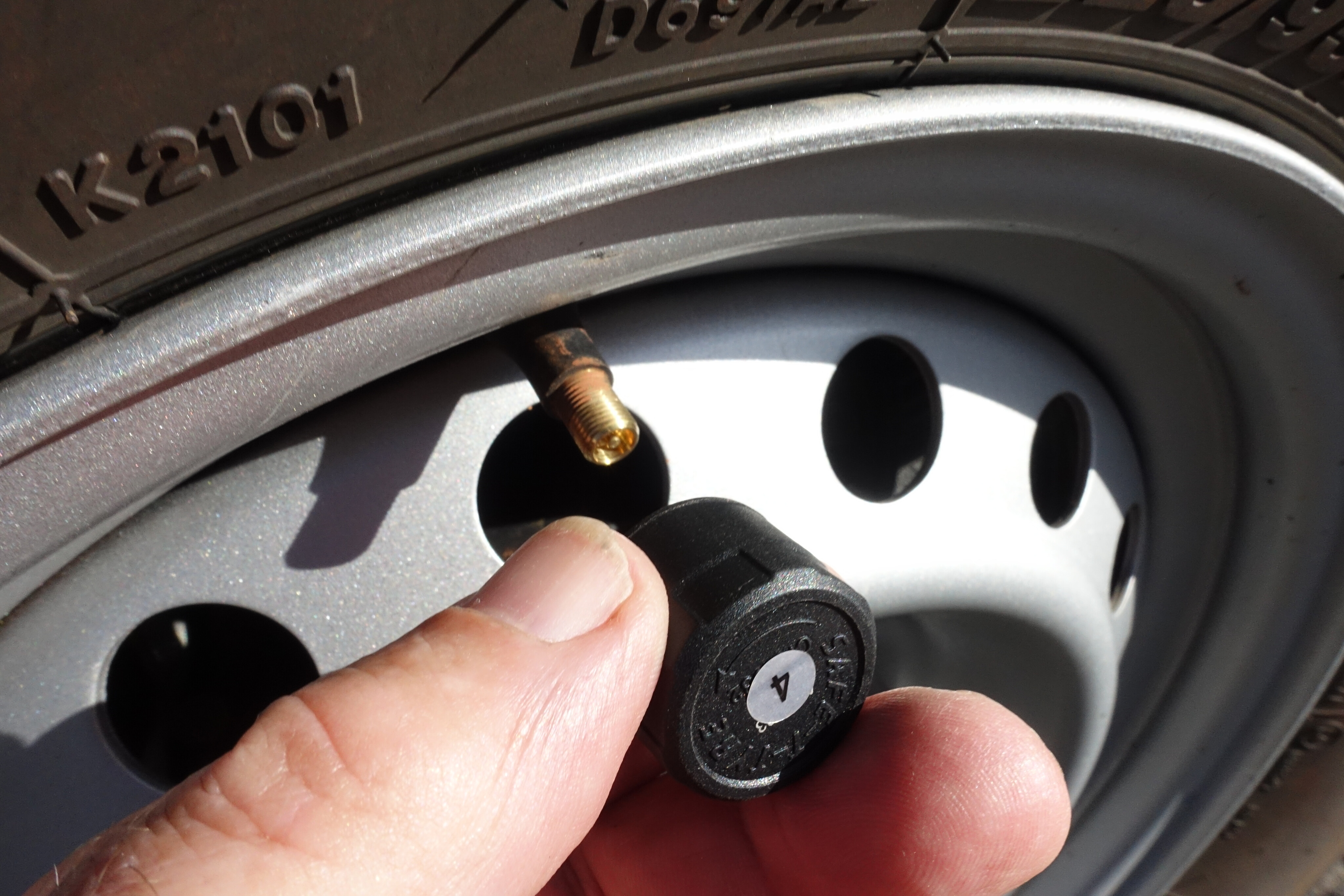
Over the years I’ve used and tested at least four different brands of tyre pressure monitoring systems (TPMS) including the cheapest I could find on the internet and some of the dearest available from reputable suppliers.
None worked particularly well and for the past two years I’ve been running TPMS free, which in retrospect isn’t the best idea I’ve ever had. On our most recent trip on the Canning Stock Route I heard so many good reports of the Safety Dave Tyre Pressure Monitoring System that I relented and fitted one.
There are a number of models to choose from, from the basic four-sensor unit for around $380 to a 22-tyre version for trucks. We opted for the ST-3000 kit which includes the receiver/monitor with rechargeable lithium battery, a suction mount for the monitor, charging cable and hardware, eight sensors, spare sensor batteries, lock nuts and O-rings.

The ST-3000 comes with a separate signal booster unit to improve signal reception from a trailer or van. This unit needs to be plugged into power and for the best results situated at the rear of the tow vehicle. While we didn’t have any problems with receiving the signal from the van without the booster, we had an ideal mounting spot and power available that made it a no-brainer.
The 3.5-inch monitor has up to 80 hours of rechargeable battery life and detects tyre pressures between 8psi and 218psi.
The installation is simple with the first step to pair the sensors with the receiver before fitting them to the tyres. Once they are talking to each other – the time taken was less than five minutes to pair all six sensors I wanted to use – you fit the sensors to the tyres. You can set the pressures (both high and low) and temperatures that the monitor will alarm at.
Once the vehicle is moving the receiver may take a minute or so (usually less) to pick up the signal from each tyre. The monitor displays what tyre is being monitored at that particular time and the tyre pressure and temperature that the tyre is at. It took about 15 seconds for the monitor to look at each of the six tyres we had on the ground.
Where you position the screen is very much up to you but I’ve got it out of the way as much as possible so it’s out of my line of sight, as it will alarm whenever the tyre pressures you have set are reached anyway.
With a few thousand kilometres of blacktop, dirt roads and rough tracks under the wheels since I’ve fitted them, the TPMS has already saved a tyre that picked up a slow puncture while we were wandering across the Gulf Road in northern Queensland. Before any damage was done the TPMS alarmed and we had a plug in the tyre and were soon on our way again.

A hint I got from other travellers was to fit a piece of ordinary garden hose to the valve stem of the tyre. This stops the rubber valve stem from vibrating and the TPMS transmitter from knocking against the wheel, which can mark the rim (especially an alloy rim) and could possibly damage the transmitter. It should be noted that the Safety Dave TPMS is covered by a two-year warranty.
I’m more than happy with this particular brand and model of TPMS and I reckon it’ll save more than just that one tyre, most likely one of the trailer tyres, as a slow leak from there is difficult to detect through any change in driving feel.

COMMENTS